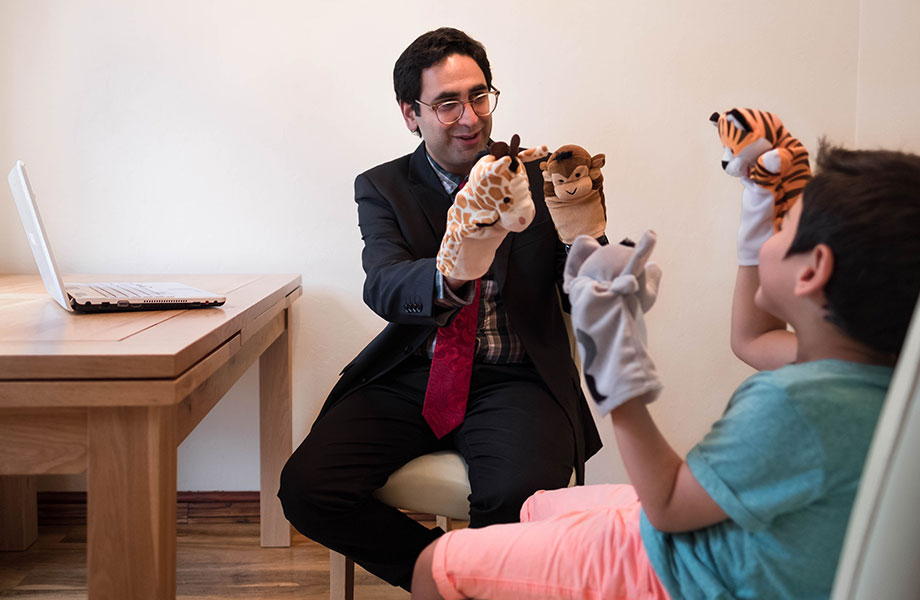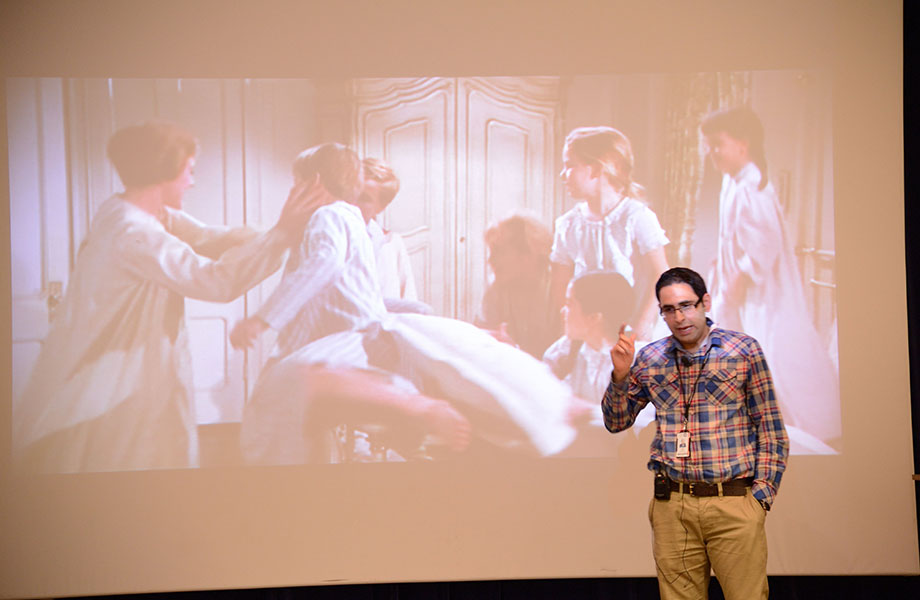Paediatric tinnitus and hyperacusis
Paediatric tinnitus, hyperacusis and misophonia
Estimates of the prevalence of tinnitus and hyperacusis in children vary from 4.7% to 46% for tinnitus and from 3.2% to 17% for hyperacusis (Coelho et al. 2007; Rosing et al. 2016).
For the first time in the field of audiology, Dr. Aazh’s team compared the correlation between Uncomfortable Loudness Levels (ULLs) and the effect of hyperacusis on the patient’s life as measured via the Hyperacusis Questionnaire (HQ) between children and adults. Their analysis included the data from over 1000 patients and showed a significant negative relationship between ULLs and HQ in adults (r=-0.4, p<0.0001). In the other words, the lower (worse) the average ULLs, the greater (worse) the hyperacusis handicap as measured via HQ for adults. However, there was no statistically significant relationship between ULLs and HQ in children (r=-0.25, p=0.09).
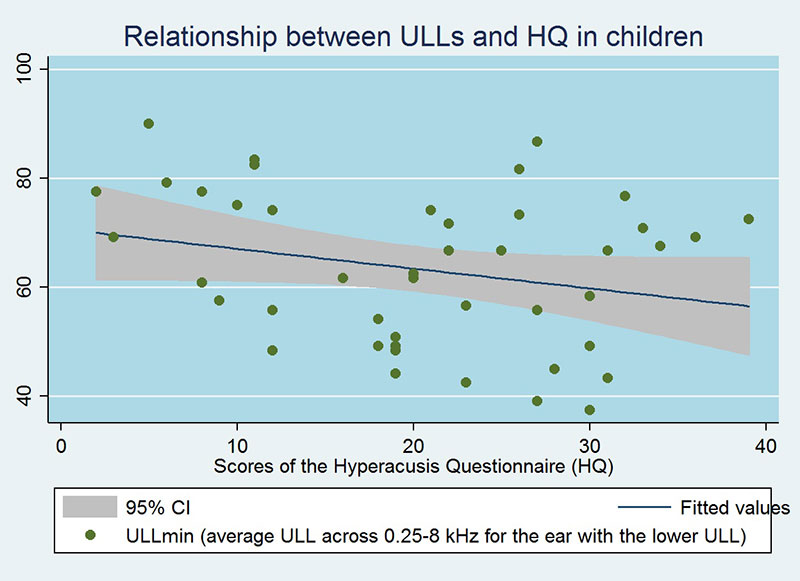
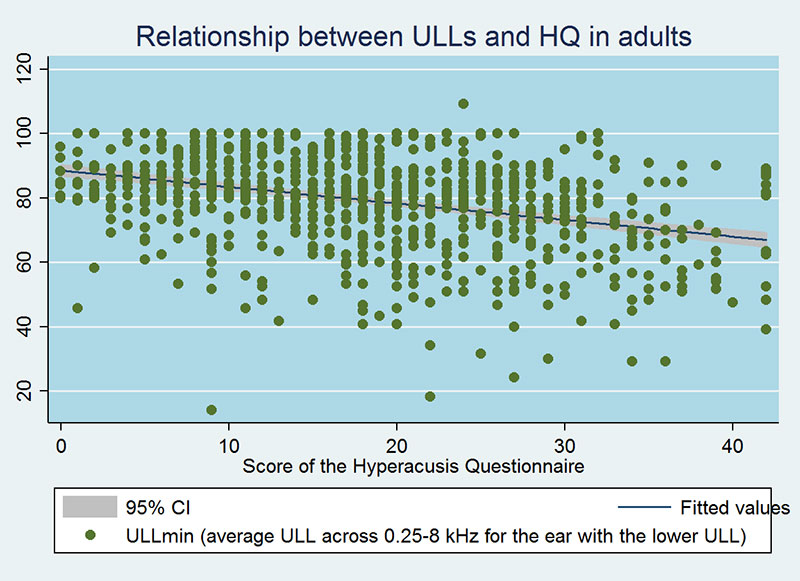
In a research study published in International Journal of Audiology, Dr. Aazh’s tinnitus team explored the questions listed below on 62 patients under the age of 18 (Aazh et al. 2018):
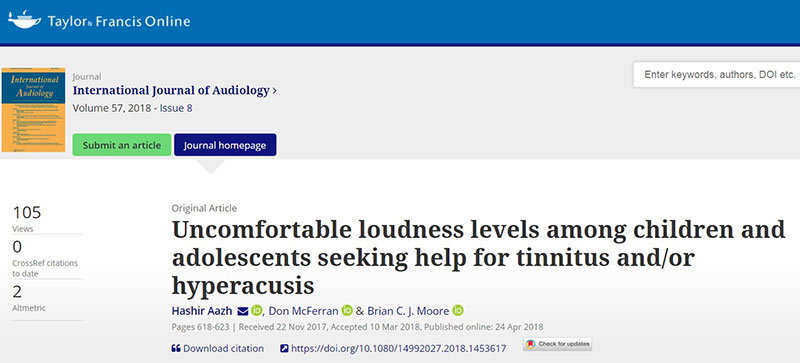
1)The proportion of children and adolescents seeking help for tinnitus and/or hyperacusis who meet the ULLmin criterion for hyperacusis. ULLmin criterion for diagnosing hyperacusis is proposed by Aazh and Moore (2017) and is based on the average ULL across 0.25, 0.5, 1, 2, 4 and 8 kHz for the ear with the lower average ULL, which is denoted ULLmin. They suggested that a value of ULLmin equal to or below 77 dB HL should be taken as indicating the presence of hyperacusis (Aazh & Moore 2017). With this ULLmin criterion, 95% of adult patients diagnosed as having hyperacusis were found also to meet the criterion of a cut-off score on the Hyperacusis Questionnaire (HQ) (Khalfa et al. 2002) of 22 or more (Aazh & Moore 2017).
2)The proportion of children and adolescents who meet the criterion for severe hyperacusis. Aazh and Moore (2018) proposed that severe hyperacusis should be diagnosed when a ULL of 30 dB HL or less is measured for at least one of frequency from 0.25, 0.5, 1, 2, 3, 4, 6, and 8 kHz, for at least one ear. Such extremely lowered ULLs can lead to very severe problems in everyday life. The average sound level of a whisper or the background noise in a quiet library is about 30 dB SPL (ASHA 2015).
3)Hearing status children and adolescents seeking help for tinnitus and/or hyperacusis.
Results showed that the mean pure-tone average (PTA) across ears was 13 dB HL (SD = 14.5). Based on the PTA for the worse ear, 80% were classified as having no hearing loss, 13% had mild hearing loss, 5.6% had moderate hearing loss, and 1.8% had severe hearing loss.
The mean value of ULLmin was 64 dB HL (SD = 15, n = 34). Based on the ULLmin values, 85% of the young patients had hyperacusis.
The mean ULL across all young patients and ears was 9.3 dB (SD = 16 dB) lower at 8 than at 0.25 kHz.
17% of patients were diagnosed with severe hyperacusis as indicated by a ULL of 30 dB HL or less. A ULL of 30 dB HL or below occurred most often at 8 kHz.
For the patients with severe hyperacusis, the mean value of ULLmin was 44.4 dB HL (SD = 6.8), while it was 68.4 dB HL (SD = 12) for the remainder of the population. The difference was significant (p = 0.0004). For the patients with severe hyperacusis, the lowest value of ULLmin was 37.5 dB HL and the lowest ULL at a single frequency was 15 dB HL, which was recorded at 6 and 8 kHz for one patient. There were no significant difference in age and gender distribution between patients with severe hyperacusis and the remainder of the population (p = 0.098 and p = 0.3, respectively). The PTA averaged across ears was 11 dB HL (SD = 7 dB) for patients with severe hyperacusis and 15 dB HL (SD = 17 dB) for the remainder of the population (p = 0.72). The mean audiometric threshold across ears was 0.7 dB (SD = 13 dB) lower at 8 than at 0.25 kHz for the patients diagnosed with severe hyperacusis, while it was 3.9 dB (SD = 20 dB) higher for the remainder of the population. However, the difference was not significant (p = 0.57).
The strong across-frequency variation in ULLs for many of our young patients might be an indication of adverse reactions only to specific sounds, which is consistent with the definitions of annoyance and fear hyperacusis (Tyler et al. 2014) and misophonia (Cavanna & Seri 2015; Kumar et al. 2017).
References
Aazh, H., McFerran, D., & Moore, B. C. J. (2018). Uncomfortable Loudness Levels among children and adolescents seeking help for tinnitus and/or hyperacusis International Journal of Audiology
Aazh, H., & Moore, B. C. J. (2017). Factors related to Uncomfortable Loudness Levels for patients seen in a tinnitus and hyperacusis clinic. International Journal of Audiology 56, 793-800.
Aazh, H., & Moore, B. C. J. (2018). Prevalence and characteristics of patients with severe hyperacusis among patients seen in a tinnitus and hyperacusis clinic Journal of American Academy of Audiology, 29, 626-633.
ASHA (2015). Noise. Audiology Information Series, 10802, 1-2.
Cavanna, A. E., & Seri, S. (2015). Misophonia: current perspectives. Neuropsychiatr Dis Treat, 11, 2117-23.
Coelho, C. B., Sanchez, T. G., & Tyler, R. S. (2007). Hyperacusis, sound annoyance, and loudness hypersensitivity in children. Prog Brain Res, 166, 169-78.
Khalfa, S., Dubal, S., Veuillet, E., et al. (2002). Psychometric normalization of a hyperacusis questionnaire. ORL J Otorhinolaryngol Relat Spec, 64, 436-42.
Kumar, S., Tansley-Hancock, O., Sedley, W., et al. (2017). The Brain Basis for Misophonia. Current Biology, 1-7.
Rosing, S. N., Schmidt, J. H., Wedderkopp, N., et al. (2016). Prevalence of tinnitus and hyperacusis in children and adolescents: a systematic review. BMJ Open, 6, e010596.
Tyler, R. S., Pienkowski, M., Rojas Roncancio, E., et al. (2014). A review of hyperacusis and future directions: part I. definitions and manifestations. American Journal of Audiology, 23, 402-419.
Read MoreCookie settings
REJECTACCEPT
Privacy Overview
| Cookie | Duration | Description |
|---|---|---|
| __stripe_mid | 1 year | Stripe sets this cookie cookie to process payments. |
| __stripe_sid | 30 minutes | Stripe sets this cookie cookie to process payments. |
| cookielawinfo-checkbox-advertisement | 1 year | Set by the GDPR Cookie Consent plugin, this cookie is used to record the user consent for the cookies in the "Advertisement" category . |
| cookielawinfo-checkbox-analytics | 11 months | This cookie is set by GDPR Cookie Consent plugin. The cookie is used to store the user consent for the cookies in the category "Analytics". |
| cookielawinfo-checkbox-functional | 11 months | The cookie is set by GDPR cookie consent to record the user consent for the cookies in the category "Functional". |
| cookielawinfo-checkbox-necessary | 11 months | This cookie is set by GDPR Cookie Consent plugin. The cookies is used to store the user consent for the cookies in the category "Necessary". |
| cookielawinfo-checkbox-others | 11 months | This cookie is set by GDPR Cookie Consent plugin. The cookie is used to store the user consent for the cookies in the category "Other. |
| cookielawinfo-checkbox-performance | 11 months | This cookie is set by GDPR Cookie Consent plugin. The cookie is used to store the user consent for the cookies in the category "Performance". |
| viewed_cookie_policy | 11 months | The cookie is set by the GDPR Cookie Consent plugin and is used to store whether or not user has consented to the use of cookies. It does not store any personal data. |
| Cookie | Duration | Description |
|---|---|---|
| _ga | 2 years | The _ga cookie, installed by Google Analytics, calculates visitor, session and campaign data and also keeps track of site usage for the site's analytics report. The cookie stores information anonymously and assigns a randomly generated number to recognize unique visitors. |
| _gat_gtag_UA_131443801_1 | 1 minute | Set by Google to distinguish users. |
| _gid | 1 day | Installed by Google Analytics, _gid cookie stores information on how visitors use a website, while also creating an analytics report of the website's performance. Some of the data that are collected include the number of visitors, their source, and the pages they visit anonymously. |
| CONSENT | 2 years | YouTube sets this cookie via embedded youtube-videos and registers anonymous statistical data. |
| Cookie | Duration | Description |
|---|---|---|
| VISITOR_INFO1_LIVE | 5 months 27 days | A cookie set by YouTube to measure bandwidth that determines whether the user gets the new or old player interface. |
| YSC | session | YSC cookie is set by Youtube and is used to track the views of embedded videos on Youtube pages. |
| yt-remote-connected-devices | never | YouTube sets this cookie to store the video preferences of the user using embedded YouTube video. |
| yt-remote-device-id | never | YouTube sets this cookie to store the video preferences of the user using embedded YouTube video. |
| yt.innertube::nextId | never | This cookie, set by YouTube, registers a unique ID to store data on what videos from YouTube the user has seen. |
| yt.innertube::requests | never | This cookie, set by YouTube, registers a unique ID to store data on what videos from YouTube the user has seen. |
| Cookie | Duration | Description |
|---|---|---|
| m | 2 years | No description available. |
